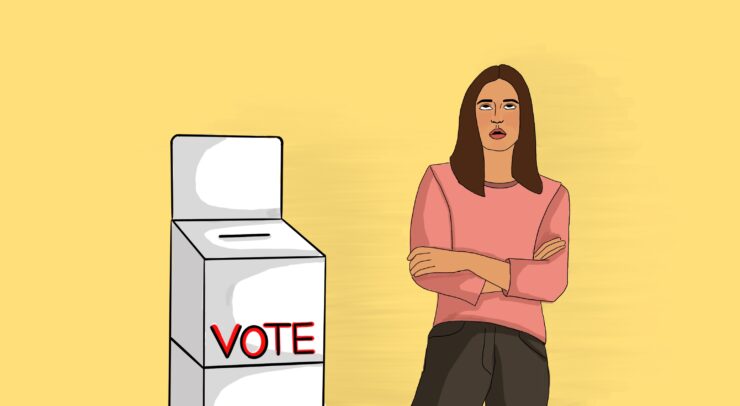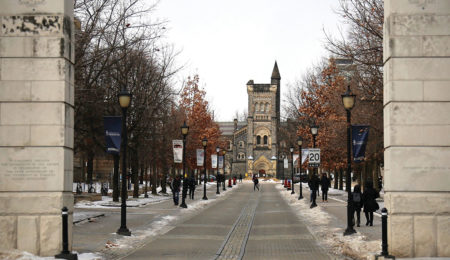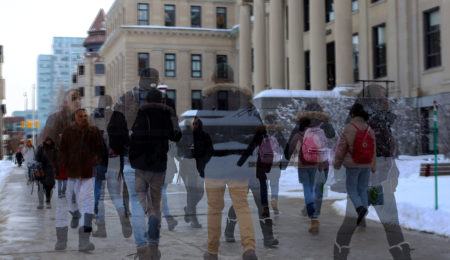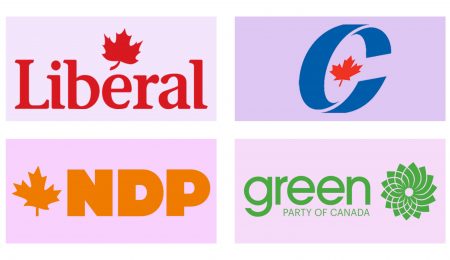How to better engage young people in the democratic processes
Imagine a Monday morning in Ottawa: as the sun rises over the curve of the earth, crowds of seniors flood into Tim Hortons. Middle-aged adults, wearing suits and holding leather briefcases, make their way to work in tall glass buildings downtown. Meanwhile, the voting-age youth yawn in front of bus stops with backpacks slung over their shoulders as they wait for their buses to take them to campuses across the city.
Canada is a country rich in demographics — and a diverse age-range of voters is just one example of that. However, some age groups seem to be less represented in the democratic process than others — namely, the voting-age youth.
What is it about young people that sets them apart from other voting age groups, and what kind of trends do we see in their behaviour historically and in modern-day?
Historical trends in youth engagement
It’s helpful to look at the voting behaviour of youth in the past to understand youth behaviour at the ballot box today.
“Young people are choosing not to vote in their first elections,” says Samatha Reusch. Reusch is a research and evaluation manager at Apathy is Boring — a non-partisan, Canadian organization dedicated to educating Canadian youth about democracy. “ (Voting has) been declining since the 1970s … in the 18-25 age range across those decades.”
This peculiar trend is contrasted by a complementary reality. According to one Statistics Canada study, almost one in seven university-educated youth and 32 per cent of youth with a high school education or less participate in “non-voting political behaviour.” It seems that modern youth prefer civil activity over going to the polls.
The criterion for non-voting political behaviour in this study included one or more of the following: signing a petition, searching for information about a political issue online, boycotting a product or choosing a product for ethical reasons, expressing political views by contacting a politician or news outlet, participation in a demonstration or march, speaking at a public meeting, or volunteering for a political party.
However, there has been an anomaly in youth voting behaviour over the past ten years, according to Joel Westheimer, a University of Ottawa professor who specializes in youth civic engagement.
“In the last ten years or so there has been a real uptick (in youth voter engagement,)” he says.
“(Barack) Obama’s election in the U.S. spurred youth engagement. Trudeau as well. For a few years, political scientists said this might be a temporary bump that has to do with Obama and Trudeau. A lot of … people [expect] it to return to previous levels.”
Youth engagement in the modern day
People seem to set patterns that stick at a young age when it comes to voting behaviour.
“People who don’t vote in their first election are not likely to start voting,” says Reusch.
That’s part of what makes the sort of work Apathy Is Boring is doing so important — in order to get people to vote, they need to be reached while they’re young. The organization does so in a number of ways.
“Apathy is Boring’s mission is to engage peers in Canadian democracy,” says Reusch. “(We’ve always) had an online presence … We were founded in 2004. Facebook wasn’t even a thing yet.”
“(But) research shows face to face engagement is what works best. We go to events where young people are, like concerts.”
It appears that their efforts are not in vain.
“Last federal election saw a significant increase in youth voting — 18 per cent. We hope it’s a start in a reversal of the trend, but it may be an anomaly. We’re trying to build on that momentum.”
Westheimer is not alone, then, in noticing this youth voting anomaly, or in his hope for it to continue. But all this information begs the question: how can this unexpected momentum be built on? Westheimer had some thoughts on what can be done from an education standpoint.
“In Ontario, there is a mandatory civics course, which is most peoples’ worst course in school,” he says. “It emphasizes everything we know that doesn’t work. The good news is we know what does engage youth. When students work in the community that’s tied to their academic curriculum.”
“When they discuss controversial issues in classes — current ones, and in thoughtful and engaging ways — that boosts civil engagement. When they engage in simulations in current issues, that also boosts civil engagement. And yet, all of those things are rarer than they should be.”
Westheimer says he also thinks that there should be a shift in focus in these high school courses.
“In Ontario, civics is conflated with careers,” he says. “The idea that what makes a good citizen is a citizen with a good job is a very incomplete and impoverished notion of democratic engagement.”
Outside of school, this begs the question of how a politically engaged youth can engage their peers.
“The conversation needs to be bigger than voting,” Westheimer says. “It needs to be about making a better world where we engage our friends in the kind of discussion of ‘how can we do more?’ ”
“Start talking to (your friends) about political issues, social change and what kind of world (they) want to live in. Voting tends to be a proxy for other forms of political engagement.”
The young vote, tomorrow
Part of what made youth so proportionally unengaged in democratic processes historically was that the issues prevalent in government and the media did not affect them strongly. It is important to know what kind of world youth actually want to live in.
For example, while health care may be less of a concern to a young person than it is to an older person, education may be at the forefront of their priorities.
However, there are more and more issues that directly put youth in the immediate focus of society than there were even 20 years ago. Some examples include climate change — as evidenced by the Sept. 27 Global Climate Strike that marched to Parliament Hill — but also education reform and tuition costs.
Westheimer says he thinks that in the context of the current government in Ontario, issues such as the environment and tuition for higher education are engaging to young voters in a way that issues in the past weren’t.
Perhaps Westheimer, Reusch, and other experts are right to be hopeful about future youth voter engagement. If these issues are important enough to get youth to demonstrate on Parliament Hill, maybe they’re also important enough to get them to vote. The death of youth voter apathy may well be just around the corner.
For now, though, everyone is left waiting on the edge of their seats. What kind of engagement will the data show after this federal election? Will more youths start voting, or will the trend slide back into place? Only time — and data — will tell.





